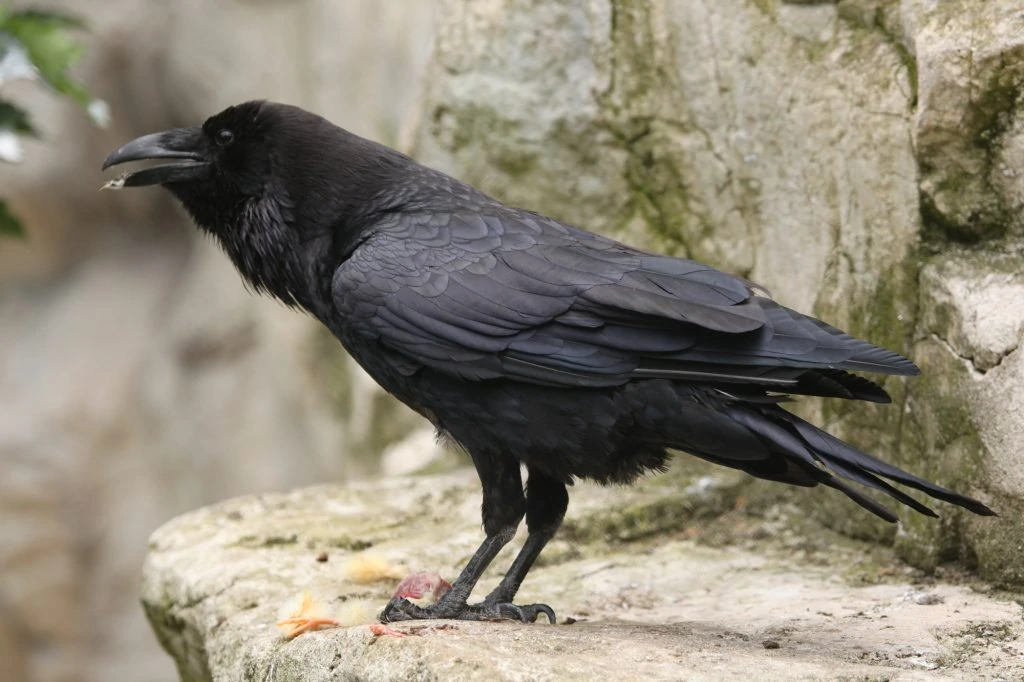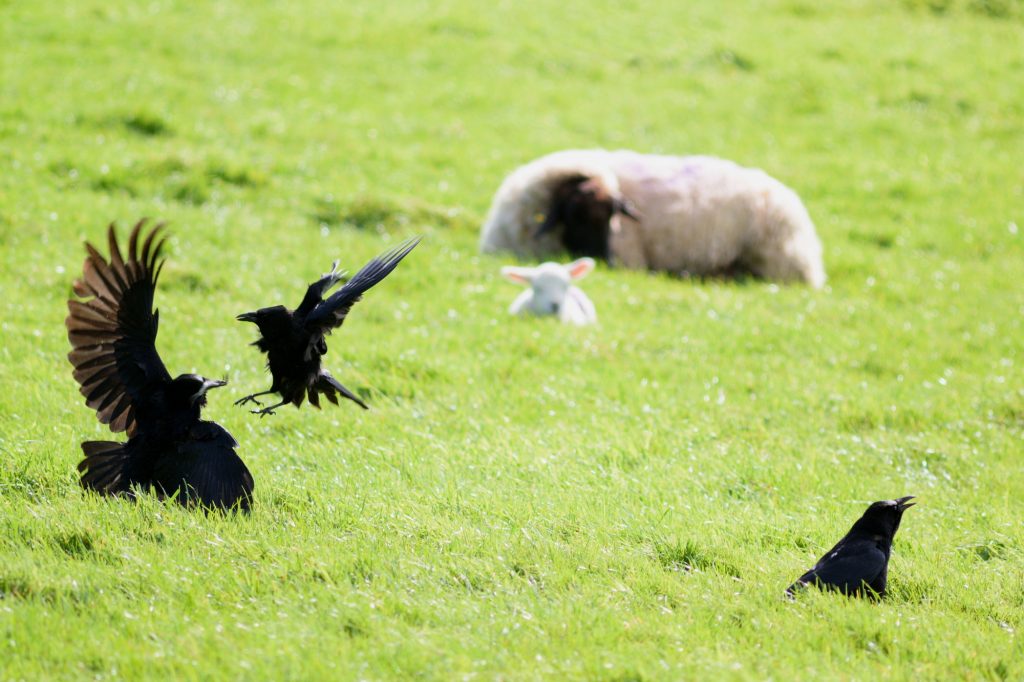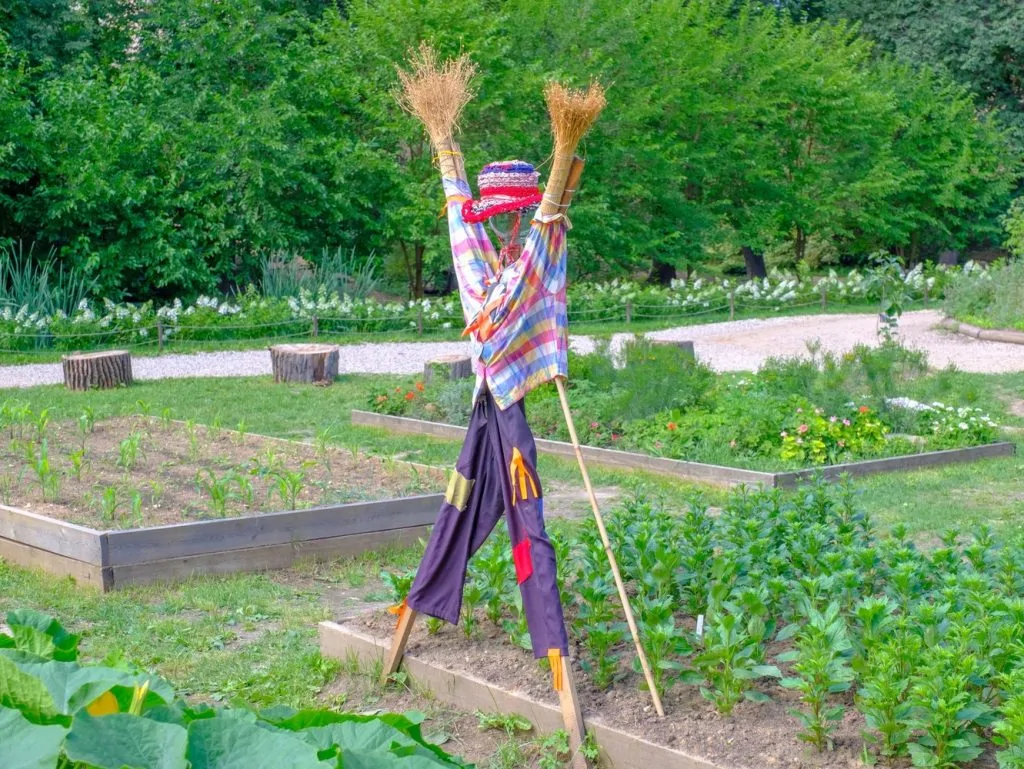
Have you ever wondered what ravens eat? You often see them near roads or raiding garbage bins, but surely that can’t be their entire diet? Whether you want to attract them to your garden, or are simply curious, you may be surprised to learn what ravens have on their menu.
Ravens (Corvus Corax) are omnivorous birds with a diverse diet, including mammals, invertebrae, plants, reptiles, birds, and human food. As opportunistic feeders, they prefer foraging and scavenging for food but occasionally hunt in pairs or groups, targeting larger prey.
Ravens are anything but fussy eaters. They are also incredibly smart, and their opportunistic feeding habit can be seen as a case of “work smart, not hard.” However, ravens can be cunning and strategic hunters when an opportunistic meal comes along in the form of a larger animal like a calf or lamb.
The Diet Of The Common Raven (Corvus Corax)
Ravens can be found in many parts of the world, from Alaska to the Saharan desert to Scandinavia. As scavengers and foragers, the diversity of their habitats contributes to their diet.
Ravens are omnivorous and have an extremely diverse diet. However, the majority of foods they consume will vary according to region. One study found that ravens ate 80% vegetation diet on one island, 90% animals on another island, and mainly trash on the third island in a small region depending on availability.
They prefer feeding in open areas as they mainly feed on the ground. Although ravens eat plants, most of their diet consists of animal matter.
Mammals

Mammals form a big part of a raven’s diet as they are abundant in most ecosystems. The most common mammals found in raven pellets are small species of rodents like rats and mice (particularly field mice), moles, and lagomorphs. The rabbits and hares are usually juveniles, as they are easier prey.
Ravens prefer scavenging above hunting. So, when the opportunity presents itself, they feast on the carcasses of sheep, deer, horses, or any other animal.
Ravens will also target the newborn of larger mammals. Farm animals are often targeted. As these animals are much larger than ravens, ravens will hunt in crowds to take down calves, baby goats, and lambs. They have also been known to attack baby lambs as they are being born.
Birds
Birds are another great food source for ravens. Young birds can easily be stolen out of the nest, while ducklings and goslings are defenseless against these capable predators. Wounded birds are often targeted by ravens too.
Other birds included in a raven’s diet are:
- Domestic fowl like chickens and guineas
- Ducks and geese (both wild and domesticated)
- Waders and gulls
- Pigeons
- Some species of seabirds, like auks and fulmar
Reptiles & Amphibians
The number of reptiles and amphibians that ravens eat will depend greatly on the area. If reptiles are abundant, but other food sources are limited, ravens have no problem feasting on lizards, geckos, tortoises, and frogs.
In the West Mojave Desert, the population of desert tortoises has declined due to raven predation. However, when mammals, insects, and more enticing foods are available, reptiles and amphibians are not a preferred meal to a raven.
Insects, Anthropods & Invertebrates
Insects and other invertebrates are a staple food source for many populations of ravens. These small animals are abundant in many ecosystems and are effortless to catch.
Grasshoppers, beetles, caterpillars, earthworms, scorpions, and other anthropods are frequently consumed.
A study about ravens’ diet in Algeria indicates that ravens in desert areas eat mostly insects and anthropods like scorpions. The diversity of insect and arthropod species varied with the seasons; ravens ate more scorpions and locusts during the summer months, followed by small reptiles and birds.
Coastal Items
Ravens near coastal habitats are uniquely positioned to include various coastal items in their diet that inland ravens cannot access.
Food consumed by ravens in coastal ecosystems includes:
- Barnacles
- Crabs
- Fish
- Mussels, oysters, and other mollusks
- A variety of other coastal matter like seaweeds, worms, and sea urchins
Plants

Although animal matter makes up the bulk of ravens’ diets, they eat various plants. Ravens and crows have been a problem among farmers for centuries, hence the term and use of “scarecrows.”
Ravens will eat the seeds of crops like wheat and alfalfa and can cause extensive damage to corn crops. They also thoroughly enjoy fruit crops like cherries, apples, and berries.
Ravens love unsalted peanuts, acorns, and other nuts. Ravens will drop nuts on hard surfaces to break the shells to reach the tasty kernels.
Carrion
Ravens are predominantly scavengers, so seeing a dead carcass is irresistible. Regardless of the habitat, nearly all ravens consume large amounts of carrion. They scavenge leftover carcasses from predators like wolves and bears and will also eat the afterbirth of mammals.
Near human populations, ravens will often scavenge roadkill. The beetles and maggots that feed on carrion are an added snack to ravens.
Human Food
With such a diverse diet, ravens have adapted well to urban areas. Although ravens are not as common as crows in highly human-populated areas, they occasionally take advantage of the abundance of food available.
Common food items that ravens will steal include dog food kept outside, unattended picnic baskets (often filled with fruit), and any other food humans have discarded.
As it is illegal to keep ravens as pets in the USA, cooked chicken or turkey pieces are a great way to attract ravens to your garden.
Other Items
Eggs are another food item that ravens will include in their diet. It is easy to steal eggs from nests, and many ravens will follow other birds to their nests and patiently wait for them to leave before looting the nests.
Ravens near urban areas often scavenge around garbage bins and at landfills. During the winter months in Alaska, ravens are common at garbage sites.
Ravens will also resort to eating the dung of mammals like wolves and dogs when food is scarce, and they are hungry enough.
How Do Ravens Feed and Hunt?
Ravens are extremely opportunistic feeders. For this reason, they prefer scavenging and foraging over hunting.
Foraging often occurs in areas with diverse plant matter and coastal regions where they forage for clams and mollusks.
When ravens scavenge or hunt, they often do so in pairs. They will empty nests of eggs and young birds and distract otters from their catch. Sometimes they will hunt in larger groups to take down newborn farm animals like lambs.
As one of the cleverest birds in the world, ravens can devise cunning plans to distract other animals (including other ravens) from food to steal it from them. To protect their food from other ravens, they will “cache” it by burying or hiding it for later, as demonstrated below.
What Food Do Baby Ravens Eat?
Like most bird species, baby ravens cannot feed themselves and stay in the nest, patiently waiting for their parents to feed them. Adult ravens will feed their newborns small, easy-to-digest foods like insects.
As the baby grows, they are fed larger items like pieces of fieldmice until they are big and strong. At five to six weeks, they eat the same foods as their parents and are ready to leave the nest.
Ravens are caring parents, and being as clever as they are, they will often soften foods by drinking water before feeding to make it easier to digest.
Final Thoughts
As opportunistic and smart birds, ravens have a diverse diet and will eat almost anything they can find. While they prefer foraging or scavenging for food, they can and do hunt when the need arises. Ravens occasionally hunt in groups and distract other animals from their food.
